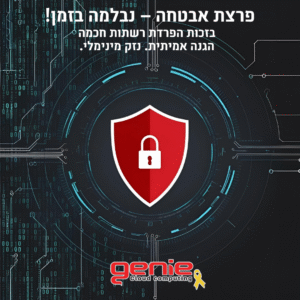What is Zero - trust and how does it contribute to raising the level of information security in the organization
Zero-trust security concept is a concept that challenges the traditional approach of "trust" within the computer network and instead casts doubt on anyone who wants to connect to the network whether inside or outside the network.
The concept works under the principle of "don't trust", make sure.
"In Zero trust systems, trust is obtained only after meeting the standard defined by the organization.
The Zero Trust method was adopted, developed and continues to be developed by the world's leading information security companies.
Advantages of the method:
Access Security: Zero Trust focuses on authenticating and authorizing users and devices based on various factors such as user identity, device "health," and location before granting access to resources.
Micro-segmentation:
This involves dividing the mesh into smaller sections to limit lateral movement. Even if an attacker gains access to one segment, his ability to navigate within the network is limited.
This involves dividing the mesh into smaller sections to limit lateral movement. Even if an attacker gains access to one segment, his ability to navigate within the network is limited.
Continuous monitoring:
Continuous monitoring of user and device behavior to detect anomalies or suspicious activities.
Continuous monitoring of user and device behavior to detect anomalies or suspicious activities.
This proactive approach helps identify and respond to potential security threats in real time.
Less permissions:
Minimizing the permissions for users and devices. They are given the minimum level of access necessary to perform their tasks. This minimizes the impact of a security breach and reduces the potential for unauthorized access.
Minimizing the permissions for users and devices. They are given the minimum level of access necessary to perform their tasks. This minimizes the impact of a security breach and reduces the potential for unauthorized access.
Multi-Factor Authentication (MFA):
Zero Trust often incorporates MFA to add an extra layer of security, requiring users to provide multiple forms of identification before accessing sensitive data or systems.
Zero Trust often incorporates MFA to add an extra layer of security, requiring users to provide multiple forms of identification before accessing sensitive data or systems.
Choosing a good Zero Trust product involves preliminary tests:
Responding to the need:
It is important that the solution fits the needs and evolving technologies of the organization.
It is important that the solution fits the needs and evolving technologies of the organization.
integration:
It is important to make sure that the chosen product integrates seamlessly with the existing security infrastructure in the organization while avoiding disruptions in the activity.
It is important to make sure that the chosen product integrates seamlessly with the existing security infrastructure in the organization while avoiding disruptions in the activity.
User friendly interface:
A user-friendly interface enables efficient management of the security policy and monitoring.
A user-friendly interface enables efficient management of the security policy and monitoring.
In conclusion:
The implementation of the Zero trust method significantly improves the level of information security in the organization and thus enables safe work inside and outside the organization.
The author: Zabri Idan, VP of expert services and information security at Genie
The author: Zabri Idan, VP of expert services and information security at Genie
You may be interested in:

אירוע משפחות סוף קיץ 2025
31.08.2025


פישינג בעסקים: איך לזהות, למנוע ולהגיב נכון
07.07.2025


החשיבות של סריקות פגיעויות באבטחת סייבר
29.01.2025

הכוח של ניטור הרשת האפלה באבטחת מידע
23.01.2025





